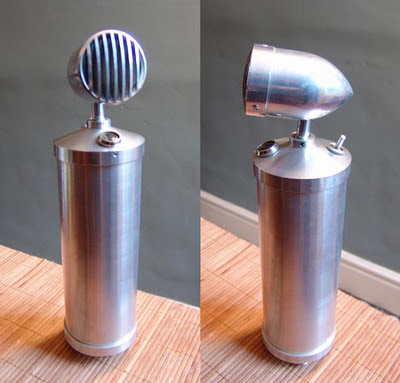 |
| Big old German bottle microphone (flaschenmikrofon) |
In looks, this is very much in the style of an RFT CM7049 or a Neumann CMV3, but doesn't match any of the models that I am aware of by those manufacturers. The mic stands around 320 mm tall by 80 mm diameter, and is beautifully machined from aluminium, so we'll call him 'Big Al'.
The bottom bell is secured by two thumbnuts, which make access to the tube and battery compartment very easy.
The capsule is held in place by a clamping ring with 12 screws, and the diaphragm looks to be either nickel, or some kind of metallised film. It is not possible to get the capsule out of the head without removing these screws - not something I really want to be doing. It is even possible to work out the backplate hole pattern from the dents in the diaphragm.
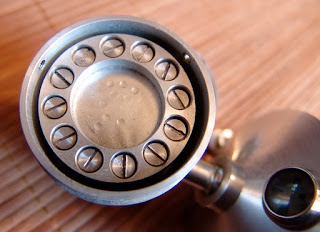 |
| Bottle microphone capsule |
The tube is a Telefunken DAF11 which dates back to the 1940s. I haven't met one of these before, but the datasheet is available at Frank's, and shows it to be a diode and pentode in the same shell, with a common heater & cathode.
 |
| DAF11 tube |
The diode part is not used in this mic. The heater supply is a modest 1.2V at 50 mA, and is designed to run from a battery cell.
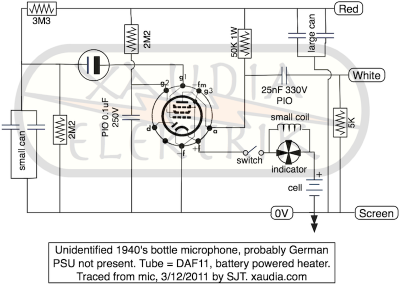 |
| DAF11 bottle mic schematic |
I traced out the circuit - the heater supply does indeed come from a battery, and there is a space inside the mic for a large cell. The switch on the top of the mic breaks the filament supply, saving battery power and (eventually) muting the mic, and there is a Neumann / RFT style indicator. in the top.
The capacitors in the rectangular metal cans are not labelled, but each can contains a pair of caps with a common negative terminal. On the bench, all four caps measure 1.0 ± 0.2 uF, and the different can sizes must reflect different voltage ratings.
There is no grid resistor present in the mic - either it has been removed for some reason, or the design relies on grid leak to set the bias.
Update 7/12/2011
We had a nice little discussion about this mic over at GroupDIY.

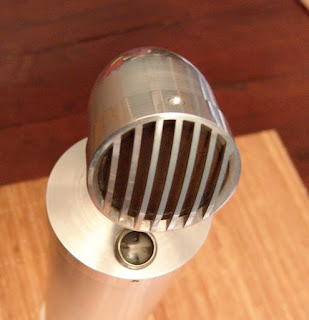
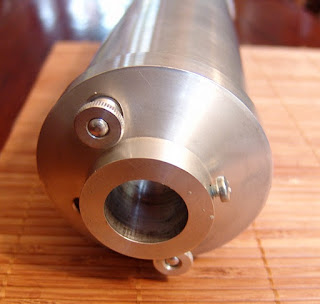


No comments:
Post a Comment
Post a comment!
Note: only a member of this blog may post a comment.